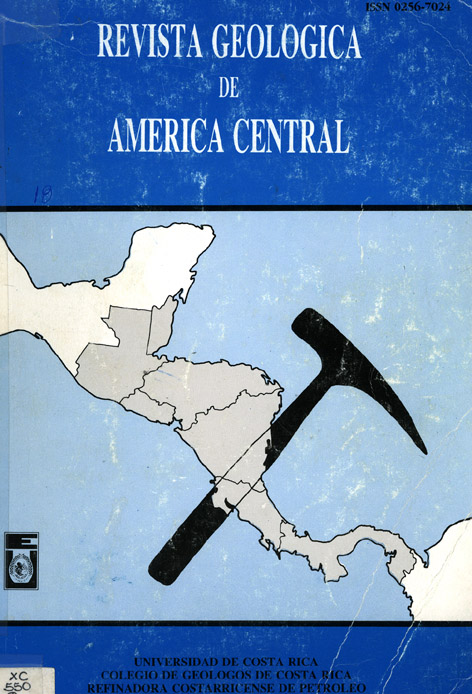Abstract
Irazú is a stratovolcano located in the Central Volcanic Range, 20 km NE from San José, capital of Costa Rica. This volcano has a very important record of activity in historic times. The last eruptive period was in 1963-1965.
A seismic swarm was detected at lrazú, starting in January 1991, after an important earthquake (MD 5,8) recorded 50 km away from the volcano. This swarm lasted for several weeks and included events of magnitudes strong enough to be felt by the people in San José. After several weeks of repose, another important earthquake on April 22, 1991, located 80 km away from Irazú reactivated the seismic swarm near the volcano, with a rapid increase in the number of events.
Three main types of seismic signals have been identified at a) volcano-tectonic earthquakes (A-type), b) low frequency earthquakes (B-type) and c) tremor. The vulcano-tectonic activity was more important during the half of the year 1991 and low frequency volcanic events were predominant after that. Volcano-tectonic earthquakes were distributed mainly l to 5 km SSE of Irazú crater, with depths frorn 5 to 10 km, B-type events concentrated within a radius of l km around and the summit. The energy budget estimated for the present seismic crisis was in the order of 1018 ergs. Spectral analysis performed for the low frequency events showed frequency picks of 1.2, 2.9 and 2.3 Hz; tremor spectral content was in the range of l to 4 Hz.
The l991 crisis can be interpreted according to two different hypothesis (or combination of both): a) A magmatic movement associated to a new magma intrusion or residual magma from the last emptive period, b) Unstabilization of the volcanic system by regional tectonic earthquakes. The lack of clear evidences for a new shallow magmatic intrusion supports the hypothesis of disturbance in the volcanic tectonic ond hydrothermal system by the strong tectonic earthquakes in december 22, 1990 and April 22, 1991.






